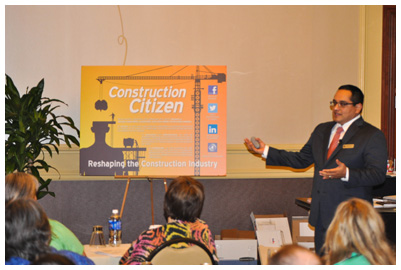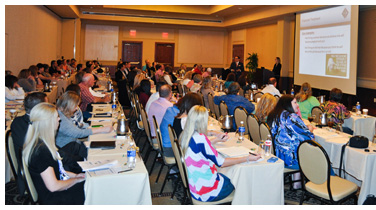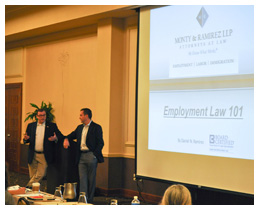 The federal government is getting more serious all the time about cracking down on businesses that pretend their employees are subcontractors when, by law, they should be paid as employees. That was part of the message of labor law attorney Daniel Ramirez as he spoke to about a hundred representatives of various businesses at a labor law conference in the Dallas area hosted by
The federal government is getting more serious all the time about cracking down on businesses that pretend their employees are subcontractors when, by law, they should be paid as employees. That was part of the message of labor law attorney Daniel Ramirez as he spoke to about a hundred representatives of various businesses at a labor law conference in the Dallas area hosted by
K&S Insurance Agency.
Ramirez, who also spoke in great detail about workplace issues like sexual harassment and the realities of the Affordable Care Act, said that his main concern for employers about worker misclassification is that companies can quickly find themselves in court facing class-action lawsuits.
“This is one of the hottest litigated issues,” Ramirez said, in large part because some workers will find out they should have been paid as employees and therefore should have received overtime pay.
If an employee filed suit over a claim of unpaid overtime to the tune of as little as $1,500, that could rapidly turn into a class action involving 10 employees collectively seeking about $30,000. And that doesn’t even take into account attorneys’ fees, Ramirez said.
Worker misclassification is also being investigated more and more by the Department of Labor, Ramirez said. The Construction Citizen team has covered the issue for years, and there is now a national focus on the real costs to workers, ethical employers, and society at large.
Ramirez pointed to the IRS 20 point test that business owners can use to help figure out which workers can legally be paid as contractors and which must be paid as employees. He said the law generally defines an “independent contractor” in a straightforward way: It’s a person who is “economically dependent on multiple people,” Ramirez said. Conversely, if someone is totally dependent on one company, the high probability is that person cannot be classified as a contractor, even if they work at multiple locations.
He gave the example of a worker who was doing maintenance for one company at five different locations throughout Houston. The maintenance worker was easily putting in as many as 60 hours a week. “All he serviced was that one company at five different facilities,” Ramirez said, but because he was being paid as a contractor, he could be owed some serious overtime. “That’s truly an employee,” Ramirez said. If it was done that way for years, “that employee could be owed $35,000 to $50,000 in overtime.”
The main thing Ramirez wanted business owners to understand on this topic is that if an hourly non-exempt employee works a certain number of hours, they must be paid for those hours. That is the law, plain and simple, he said. Even if an employee works when they are told not to by their supervisor, they must be paid for the hours worked. “If they do work overtime, you have to pay them,” Ramirez said.
As frustrating as it might sound, Ramirez said the proper remedy for dealing with an employee who constantly works when they are told not to is termination of that employee.
Ramirez stressed that there are many ways to avoid class-action lawsuits about unpaid overtime pay and many of the methods are fairly simple – but the employer must be vigilant. There are some companies where supervisors are fully responsible for keeping timesheet records of subordinates. In those cases, the employees are not even putting a signature or their initials on timesheets to verify that the hours reflected in the records are accurate. Ramirez said it is actually okay to do it that way, but it is much easier to defend such records in court if they are signed by the employees.

Noted Labor Law Attorney Warns Employers Against Worker Misclassification
by Scott Braddock | October 22, 2014



Add new comment